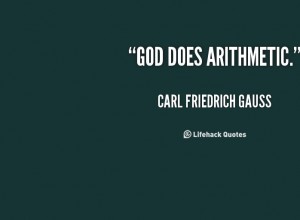Mathematics is less related to science than it is to philosophy ~ George Shiber
The philosophically essential point when it comes to M-theory is that it is uniquely constrained in its unifying description of all the forces of nature as well as group-theoretically accounting, in a monistic way, for all the particle spectrum and metaplectically accounts for all the particles’ nomological properties to all arbitrary explanatory and causal orders and analytically entails the action(s) of quantum gravity, and thus includes in its Picard-group, the graviton, and completely subsumes the Standard Model of physics. A philosopher will, however, want to ask: can M-theory be evidentially compatible with 4-dimensional phenomenology. The answer is yes, and thus the importance of a fourfold ![]() Calabi-Yau M-theoretic compactification. A bonus is that one obtains a D = 3 effective Lagrangian without having to contextually embed the theory in 11-dimensional super-gravity theory.
Calabi-Yau M-theoretic compactification. A bonus is that one obtains a D = 3 effective Lagrangian without having to contextually embed the theory in 11-dimensional super-gravity theory.
The starting context is 11-dimensional SuGra action:
![Rendered by QuickLaTeX.com \[\begin{array}{c}{S^{(11)}} = \frac{1}{{2\kappa _{11}^2}}\int {{d^{11}}} x\sqrt { - {g^{(11)}}} \cdot \\\left( {{R^{(11)}}\frac{1}{2}{{\left| {{F_4}} \right|}^2}} \right) - \frac{1}{{12\kappa _{11}^2}} \cdot \\\int {{A_3}} \wedge {F_4} \wedge {F_4}\end{array}\]](https://www.georgeshiber.com/wp-content/ql-cache/quicklatex.com-e62599f1750b93bc7845551ac2453886_l3.png)
with ![]() a 3-form,
a 3-form, ![]() its field strength and
its field strength and ![]() the Gaussian determinant of the 11-D metric that allows us to associate it to the sigma-model 6-D 5-brane anomaly of the world-volume:
the Gaussian determinant of the 11-D metric that allows us to associate it to the sigma-model 6-D 5-brane anomaly of the world-volume:
![]()
with:
![]()
where:
![]()
is the super-membrane world-volume tension and ![]() is the 2-form curvature such that
is the 2-form curvature such that ![]() has symplectically both, matrix and wedge product properties. Note that
has symplectically both, matrix and wedge product properties. Note that ![]() is centrally key: it uniquely constraints Calabi-Yau fourfold reductions of:
is centrally key: it uniquely constraints Calabi-Yau fourfold reductions of:
![Rendered by QuickLaTeX.com \[\begin{array}{c}{S^{(11)}} = \frac{1}{{2\kappa _{11}^2}}\int {{d^{11}}} x\sqrt { - {g^{(11)}}} \cdot \\\left( {{R^{(11)}}\frac{1}{2}{{\left| {{F_4}} \right|}^2}} \right) - \frac{1}{{12\kappa _{11}^2}} \cdot \\\int {{A_3}} \wedge {F_4} \wedge {F_4}\end{array}\]](https://www.georgeshiber.com/wp-content/ql-cache/quicklatex.com-e62599f1750b93bc7845551ac2453886_l3.png)
thus inducing a tadpolic potential term for ![]() . One immediately realizes that this entails that the corresponding vacuum is totally degenerate. To go any further, realize that the Weyl-Polyakov anomaly-coefficient is determined by the Euler number
. One immediately realizes that this entails that the corresponding vacuum is totally degenerate. To go any further, realize that the Weyl-Polyakov anomaly-coefficient is determined by the Euler number ![]() of
of ![]() :
:
![]()
and hence, setting ![]() , one avoids the vacuum-degeneracy problem, giving us:
, one avoids the vacuum-degeneracy problem, giving us:
![]()
For the remainder of this post, let me set ![]() and
and ![]() and I will analyse a lowest possible order Kaluza–Klein reduction of the 11-dimensional SuGra Calabi-Yau fourfold. Now, taking the 11-dimensional metric the ansatz:
and I will analyse a lowest possible order Kaluza–Klein reduction of the 11-dimensional SuGra Calabi-Yau fourfold. Now, taking the 11-dimensional metric the ansatz:
![Rendered by QuickLaTeX.com \[g_{MN}^{(11)}(x,y) = \left( {\begin{array}{*{20}{c}}{g_{\mu \nu }^3(x)}&0\\0&{g_{ab}^{(8)}}\end{array}} \right)\]](https://www.georgeshiber.com/wp-content/ql-cache/quicklatex.com-af5d266dfb26a32d1103230cd95ca740_l3.png)
with ![]() ,
, ![]() , denoting the 3-D Minkowski space coordinates, and
, denoting the 3-D Minkowski space coordinates, and ![]() ,
, ![]() the internal Calabi-Yau coordinates. Therefore, and crucial for compactification, is that:
the internal Calabi-Yau coordinates. Therefore, and crucial for compactification, is that:
![]()
splits metaplectically into Einstein-background solution as a function of the vacuum expectation values of the metric moduli and the quantum micro-fluctuations induced by the moduli variations and determined by the zero-modes of the Lichnerowicz operator for ![]() . Let
. Let ![]()
![]() be complex coordinates for
be complex coordinates for ![]() that uniquely characterize and define:
that uniquely characterize and define:
![]()
and for the deformation of the Kähler form, we have:
![Rendered by QuickLaTeX.com \[i\delta {g_{i\overline j }} = \sum\limits_{A = 1}^{{h^{1,1}}} {\delta {M^A}} (x){e_{{A_{i\overline j }}}}\]](https://www.georgeshiber.com/wp-content/ql-cache/quicklatex.com-53208903d3c6b4234e10d5a7020af708_l3.png)
with ![]() a basis of
a basis of ![]() and
and ![]() the corresponding moduli. For complex structure deformations, one gets:
the corresponding moduli. For complex structure deformations, one gets:
![Rendered by QuickLaTeX.com \[{\delta _{{g_{i\overline j }}}}\sum\limits_{\alpha = 1}^{{h^{3,1}}} {\delta {{\not Z}^\alpha }} (x){b_{{\alpha _{i\overline j }}}}\]](https://www.georgeshiber.com/wp-content/ql-cache/quicklatex.com-a7b0366163f2bab5955c3b468c688d4a_l3.png)
with ![]() being complex moduli and
being complex moduli and ![]() , with
, with ![]() the basis of
the basis of ![]() determined by a Hilbert-contraction corresponding to the anti-holomorphic 4-form
determined by a Hilbert-contraction corresponding to the anti-holomorphic 4-form ![]() on
on ![]() defined implicitly by:
defined implicitly by:
![]()
and:
![]()
Hence, we finally, for this post, get the 3-form ![]() in expansion form via
in expansion form via ![]() form
form ![]() and the
and the ![]() form
form ![]() , yielding:
, yielding:
![Rendered by QuickLaTeX.com \[\left\{ {\begin{array}{*{20}{c}}{{A_{{\mu _{i\overline j }}}} = \sum\limits_{A = 1}^h {A_\mu ^A(x){e_{{A_{i\overline j }}}}} }\\{{A_{ij\overline k }} = \sum\limits_{I = 1}^{{h^{2,1}}} {{N^I}(x){\Psi _{{I_{ij\overline k }}}}} }\\{{A_{\overline {i\overline {jk} } }} = \sum\limits_{I = 1}^{{h^{2,1}}} {{{\overline N }^{{J_\alpha }}}(x){{\overline \Psi }_{\overline J ij\overline k }}} }\end{array}} \right.\]](https://www.georgeshiber.com/wp-content/ql-cache/quicklatex.com-056fa68bee6f44d9bf8a753a7ee4094a_l3.png)
Hence, until the next post, the lesson is that ![]() compactification yields
compactification yields ![]() Euclidean Supersymmetry vector multiplets
Euclidean Supersymmetry vector multiplets ![]() and
and ![]() chiral multiplets
chiral multiplets ![]() ,
, ![]() .
.
Pure mathematics is, in its way, the poetry of logical ideas ~Albert Einstein


